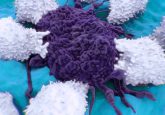New forensic technique is capable of identifying hair dye

Researchers, Dmitry Kurouski and Richard Van Duyne, from Northwestern University (IL, USA), have developed a new approach capable of detecting artificial dyes in hair, which may be important in providing new information on hair samples taken from crime scenes.
Hair is one of the most common types of physical evidence found at a crime scene and, since it may be used to connect a suspect to a crime scene, it is an invaluable piece of evidence in criminal investigations. Testing hair samples for DNA is a time-consuming procedure that requires the presence of an intact root. As a result, subjective microscopic comparison of hair taken from crime scene with a sample of the suspect’s hair is traditionally used. As this analytical approach is often inconclusive, the development of alternative and more-accurate techniques is critical.
In a recent study, Kurouski and Van Duyne describe the application of surface-enhanced Raman spectroscopy for the direct detection of artificial dyes on hair. The team demonstrated that the approach is capable of successfully determining whether or not hair is artificially dyed, if permanent or semipermanent colorants have been used, as well as distinguishing between the commercial hair dye brand used. The technique was found to be rapid, minimally destructive, and has the potential to be performed directly at the crime scene.
With this in mind, the analytical approach may be used to provide new information on hair samples taken during a criminal investigation.
Source: Kurouski D, Van Duyne RP. In Situ detection and identification of hair dyes using surface-enhanced Raman spectroscopy (SERS). Anal Chem. doi: 10.1021/ac504405u (2015) (Epub ahead of print).





